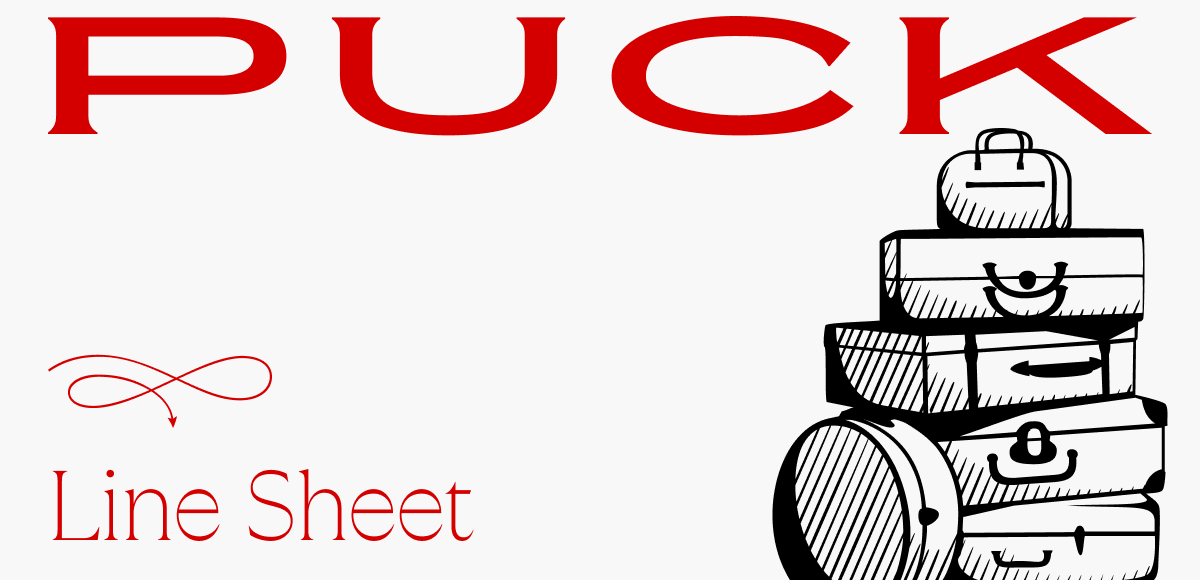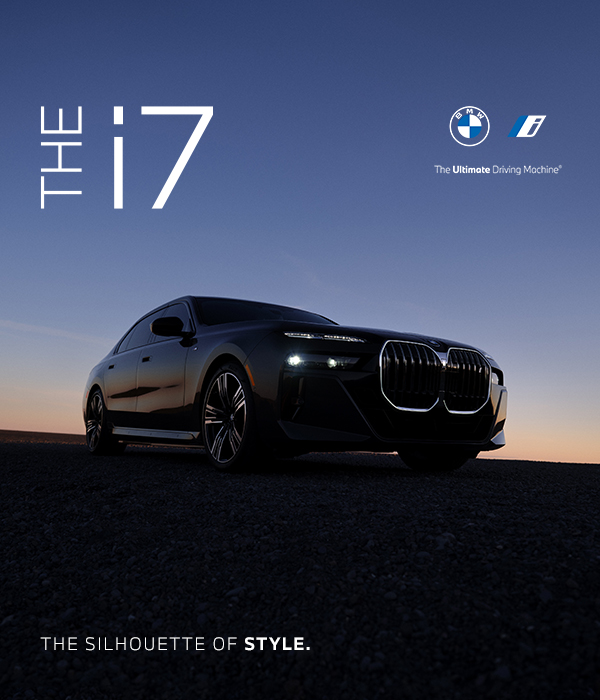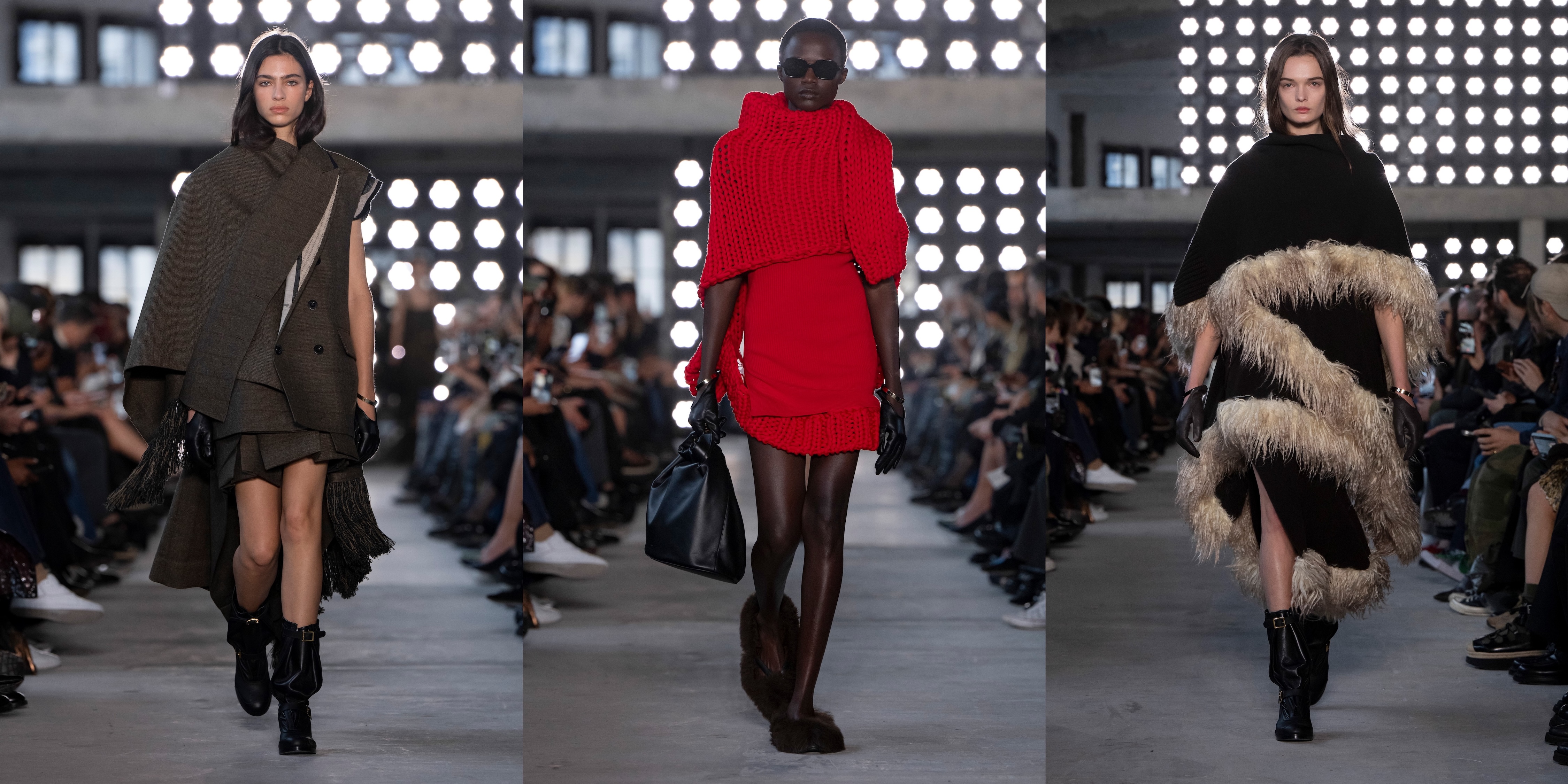Hi, and welcome back to Line Sheet. We did it! Today is the final day of Fashion Month+, which
started on February 6. (Actually, if you count Marc Jacobs, which I do, it really began on February 3. How’s your T&E looking?)
I’ll be wrapping things up in Wednesday’s issue with a report from the Saint Laurent show—until then, enjoy Sarah “SShapiro@puck.news” Shapiro’s Tuesday takeover. For our friends in Europe, she weighs the inevitability of tariffs on luxury goods and how both brands and consumers may be affected. She also rings up Rent the Runway founder and longtime C.E.O. Jennifer Hyman, who is in the process of doubling the rental platform’s inventory. When I met Jenn 15 years ago, I knew she would stop at (almost) nothing to make Rent the Runway viable. It’s
not been easy, and the pandemic put a halt to the company’s significant momentum. But the reality is that renting clothes did become a part of the so-called customer journey. As the O.G. player in the space, Jenn shares her plan to finally capitalize on the movement she started.
In the meantime, I have a long, long list of news items I want to share with you, so please email me with requests and I will prioritize your needs, wants, and desires. For now, you’ll
find a scoop on NBA star and legit fashion connoisseur Russell Westbrook’s slightly unexpected media play, and notes on what the biggest fashion brand in the world, Miu Miu, introduced this afternoon amid speculation that its parent company, Prada Group, is about to buy Versace.
🚨 Programming note: Today on Fashion People, British journalist
Tish Weinstock and I discuss Gucci, her experience walking the Chloé show, and what we liked about Demna’s “normal” clothes at Balenciaga. She also explains the inception of her book, How to Be a Goth: Notes on Undead Style. Listen here and
here.
🛍️ Sarah has something for those of you with the Shoppies: I am here to inform you—perhaps regrettably, if you’re blister prone—that jelly shoes are back for Summer 2025. The most novel version—nothing like The Row’s—are Bottega Veneta jelly intrecciato Mary Janes, which are nearly sold out on Net-a-Porter and Ssense. Then, there’s the Vince mule—most definitely riffing on The Row, but with a wider
basket weave that makes them lighter. For those determined to resist the trend because they already road tested it in kindergarten, the Emme Parsons rubber pool flat from last year has returned in a cool-looking, knotted flip-flop. My one bit of advice is that if you are in the market for a waterproof-ish
shoe, buy it now, because these types sell out fast. —Sarah Shapiro
Mentioned in this issue: Jenn Hyman, Russell Westbrook, Rent the Runway, Miu Miu, Miucca Prada, Sacai, Chitose Abe, Long Nguyen, Trump’s tariffs, Jacquemus, Sephora, Thom Browne, Carine Roitfeld, Laura Reilly, what happens if you actually get
inside The Row’s Paris store, big pants, and lots more…
|
|
|
A MESSAGE FROM OUR SPONSOR
|
Get ready for a new era of glamour. The 100% electric BMW i7 is always show-stopping. Learn more at
BMWUSA.com.
|
|
|
Three Things You Should Know…
|
- Westbrook
is a newsletter girlie now: Denver Nuggets star Russell Westbrook is a legitimate Fashion Person. He was one of the first, if not the first, sports stars to get into Thom Browne, and designed a line for Barneys New York a decade ago. My friend, the late stylist Long Nguyen, was also buddies with Westbrook, and helped him develop relationships with fashion brands in the early days.
So I wasn’t surprised to learn that Westbrook is launching a
newsletter on March 19 covering the intersection of fashion and sports. In the Word of Westbrook (published on the Beehiiv platform, subscribe here), he will assume the role of fashion commentator, promising an “unfiltered” take on everything from designer musical chairs to the best tunnel fits. It’s set to land in inboxes every other Wednesday. (Remember, Westbrook still has a
day job playing on one of the better teams in the NBA.)
While there are few, if any, pro players with as much authority in the fashion space, I suspect that Westbrook’s newsletter won’t be the last. As we’ve written plenty here at Line Sheet, fashion needs sports stars (arguably more than movie stars) to sell their wares—see Carine Roitfeld and son Vladimir’s new magazine, Players, as further evidence.
- What
constitutes a modern way of dressing?: That’s the million-dollar question this month, and one that most fashion designers, or the executives that stand beside them, are not able to answer. Miu Miu is the hottest brand in the universe right now because of the Prada Group’s incredibly effective formula, which starts with a sensational runway show and ends
with direct distribution. In between, it’s imperative to get the supply chain, product development, and merchandising right. But really, it’s about magic, just like Miuccia Prada herself.
If this season’s Prada collection, which she co-designed with Raf Simons, was about reduction—paring down—Miu Miu was what happens if you add instead of subtract. If Prada was the “yes,” Miu Miu was the “and.” I saw this as yet another
interrogation of femininity, with the pointy bras, jackets falling off the shoulders, and the old-man shoes, with all the styling tricks, glittering knits, and yes, the patchwork Miu Miu logo (more discreetly placed this season) that have made the line so cool for these times. The logo will continue to drive sales, but perhaps not so many. Things are evolving. A reporter asked if they planned to make the bras; Prada said duh without actually saying duh: “The girls are
excited by them.” What Prada has done well is make Miu Miu everything to those girls.
|
- There’s
overlap between the Sacai and Miu Miu customer, to be sure, but Chitose Abe’s muse is very much a woman. She zipped down the runway on Monday morning in knits, trenches, and capes that sort of whirled around the body in a spiral. Sacai is always about wardrobing, but this collection was particularly clear; no nonsense, no gimmicks. Who wouldn’t want to be her?
|
- The luxury tariffs tightrope: Like a swan on an idyllic pond—serene above the surface, paddling frantically below—the luxury market appears calm and composed while working feverishly behind the scenes to mitigate the volatility of Trump’s tariff agenda. Industry insiders are coming to terms with the apparent reality that no amount of lobbying will stave them off: Trump already views his Mexico tariff policy as a triumph, claiming that his
negotiation tactics curbed fentanyl trafficking, and overlooking the fact that he has waffled on their imposition.
A key clarification: Current tariffs apply to where items are produced, not shipped from. This is a common source of confusion among consumers, which is why some retailers, like Ssense, have been developing region-specific strategies since long before Trump’s presidency in preparation for shifting policies. Basically, if tariffs for apparel are
enacted (right now they only affect goods coming from China), Ssense and other retailers would decide whether to cover the tariffs by baking the extra cost into the retail price or having the customer personally pay the duty when they pick up the item at the Post Office—it depends who is identified as the “importer of record.”
For now at least, European luxury products remain unaffected, and the $800 de minimis threshold is still protecting lower-priced items (from everywhere
but China). But as our friends to the north have discovered, that could change at any moment. Meanwhile, Goldman Sachs has revised downward its projection of U.S. annual G.D.P. growth from 2.4 percent to 1.7 percent—another sign of potential turbulence that may cause aspirational luxury shoppers to reconsider any planned splurges. —Sarah Shapiro
|
And now for the main event…
|
|
|
Jenn Hyman spent the past 15 years building, funding, and taking public her
category-creating company. But with the Rent the Runway stock down 99 percent and strong competitors to fend off, the O.G. in the space is doubling its new inventory and flaunting its power in brand discoverability.
|
|
|
On Monday, Jenn Hyman, the C.E.O. and co-founder of
Rent the Runway, sent a mass email to members heralding a new strategy for the rental business: more inventory, new styles, deeper stock, and more than a dozen designer collabs with the likes of Jacquemus, Cult Gaia, and Frame. This focus on inventory goes beyond customer satisfaction—it’s a necessary and possibly a
last-ditch strategic pivot for a company looking to rewrite its Wall Street narrative… and avoid getting delisted.
RTR, the O.G. subscription fashion service, has been struggling for years, with little revenue growth, zero profitability, and rising debt. Granted, it’s got a tough business model, with shipping, logistics, and customer acquisition costs eating into margins. And recently, it’s been under pressure from second movers in the retail space, like Nuuly, which
posted stronger results last quarter. RTR’s share price now hovers just below $4—a tumble of almost 99 percent from its $345 I.P.O.
But Hyman, an H.B.S. grad who co-founded the company in 2009, is optimistic that she still has growth levers to pull. When I called her earlier this week to hear about the rollout strategy for RTR’s next chapter, she
described the rebooted platform as a discovery engine for brands—akin to Sephora, where indies are elevated and find a new generation of consumers. As always, our conversation has been lightly edited for length and clarity.
|
Sarah Shapiro: You’re making your largest inventory investment in 15
years in business. Why?
Jenn Hyman: We’ve really been looking at our data an enormous amount over the last few years, and we’ve seen that increased inventory increases retention. What we’re doing now is actually doubling the number of units. We’re taking a big leap, because we have these proof points that increased inventory availability increases hearts [Ed. note: the button that allows users to bookmark their favorite
styles], increases satisfaction with the inventory, and directly correlates to customer loyalty.
|
|
|
A MESSAGE FROM OUR SPONSOR
|
Get ready for a new era of glamour. The 100% electric BMW i7 is always show-stopping. Learn more at
BMWUSA.com.
|
|
|
So beyond simply buying more units, what are some of the other methods RTR is using to increase
inventory?
Over the last few years, we started experimenting with alternative paths. The first is in a revenue-share model, where we acquire inventory from brands at zero or very low upfront cost, then we share revenue over time. Initially, brands were skeptical of this model, just like they were skeptical of Rent the Runway overall 15 years ago, but they actually love the model because we provide them with distribution and this new marketing
channel to reach customers.
The second is these in-house designs, where we build exclusive collaborations with super desirable designers, and then we work hand in hand with them on design and manufacturing. That allows us to buy inventory from them at less than half of the wholesale price. And similarly, brands wanted to do these collaborations with us to drive awareness and acquire new customers. So we’re actually starting 15 of these collabs in the first half of 2025 alone, and we’re
now doing them with the brands that our customers really covet the most, like Simon Miller, Ganni, PatBo, Sea New York, and Perfect Moment.
What happens with end-of-life inventory? Are you concerned that increased inventory will drive up disposal costs?
In our business, liquidation of inventory is such a small part of our P&L. We actually have developed competency over the last 15 years in the restoration of garments, so that we
can turn things dozens and dozens of times. At any point in her subscription, a customer can fall in love with an item and decide to buy it from us. So 80 percent of our customers are buying items that they’ve discovered on Rent the Runway.
|
How do you plan on measuring success here?
Churn rate is the output metric, but the input metrics we look at that give us an indication as to whether someone will churn are the amount of new hearts per style [and] how quickly they fill up their basket of five items. And we look at the in-stock rate, which is essentially the number of items available in your size.
And how are you financing this? Did you need to raise additional
money?
A lot of this is revenue-share deals that are allowing us to finance it. Obviously, our exclusive designs channel is financially advantageous to wholesale, but we’ve really spent the last few years being a lot more disciplined in how we manage our cash. Since we I.P.O.’d, we’ve had to change how we operate as a company, change the margins of the business, bring down our cash burn, and get the business into a healthy position. A lot of the
work that we did in ’22 to ’24 to change the financials has enabled us now to invest back into our customers in a huge way via inventory.
|
|
|
Is the turmoil in the department store world benefiting RTR? Are brands now
relying more on RTR than on multi-brand retail chains?
Trust is everything in this industry, and I’m sure that we benefited from the fact that there’s just a lot of chaos in the industry and we’ve been this trusted partner for over 15 years. And you could really deliver one of two things to a brand. You could deliver huge sales numbers, which with some of our brands, we do. But the second thing you could
deliver is customer acquisition. Given the constant fluctuations they’ve had to experience over the last few years—with everything related to Farfetch and Matches, and now what’s happening with department stores—brands have had to put more pressure, in many cases, on their D.T.C. businesses.
Fundamentally, Rent the Runway has brought the traditional retail store into someone’s home. We make it really easy for the customer to try things risk-free—the average customer is now trying over 50
brands a year from us. She has an organic experience wearing the brand, which we know is critical for a lot of these brands.
What’s the value prop for brands to partner with Rent the Runway?
I think the analogy here is actually Sephora. This is what I aspire to be. Seven or eight years ago, Sephora changed their strategy from having all of the blockbuster brands on their platform to one where they were going to showcase indie brands and ensure that they were a
discovery engine for beauty, so that people come into that store multiple times a week, whether online or in person. We’ve become this entirely new marketing channel for coveted brands to acquire future customers of all ages, and I think the brands are seeing this in their data. So the hottest brands in the world are coming to us now because they see us as a marketing opportunity, and a place where customers can really find the latest and greatest in designer fashion in constant rotation.
|
Dimepiece founder Brynn Wallner, Friend of Line Sheet and Number One Reason You’re
Considering Buying a Vintage Cartier Tank, was profiled by Puck’s very own art correspondent Julie Davich. [Wall Power]
Laura Reilly’s Fashion Week diary is a fabulous pop-up newsletter concept. In this issue, she reports on what people were wearing at The Row’s store, shares two by-appointment-only vintage shops, and gives
a list of store recs from the Jacquemus team. It’s really good. [Magasin]
Rachel Tashjian offers advice for men entering their “big pant era.” What you consider “big” is relative, though: Maybe start with Alex Mill’s straight-leg chino. Very nice.
[Instagram]
|
That’s it from Line Sheet. By the way, I’m curious if you, too, received a weird email from Matches this
past week. (We all know that Matches shut down last summer and is currently attempting a B2B revival.) If you feel like you’ve seen a ghost, you are not alone. One theory is that something is up with the purchase confirmation tool a lot of retailers use. (Someone wrote to me to say that they’ve received similarly bizarre emails from J.Crew and a contact lens company.) Anyway, I reached out to a rep from Frasers, the company that owns Matches, to figure out what was up. If you have any ideas, let
me know!
Until tomorrow,
Lauren
P.S.: We are using affiliate links because we are a business. We may make a couple bucks off them.
|
|
|
Need help? Review our FAQ page or contact us for assistance. For brand partnerships, email ads@puck.news.
You received this email because you signed up to receive emails from Puck, or as part of your Puck account associated with . To stop receiving this newsletter and/or manage all your email preferences, click here.
|
Puck is published by Heat Media LLC. 107 Greenwich St, New York, NY 10006
|
|
|
|











